8.2.3 Breakage of tubes inside sealed buckets (safety cups)
Always use sealed centrifuge buckets, and load and unload them in a BSC. If breakage occurs during centrifuging, broken tubes must be discarded in a puncture-resistant container and disposed of immediately.
Decontaminate centrifuge buckets by soaking them in a suitable disinfectant. Do not use bleach to disinfect metal parts because it causes corrosion. Alternatively, buckets may be decontaminated by autoclaving.

 Feedback
Feedback